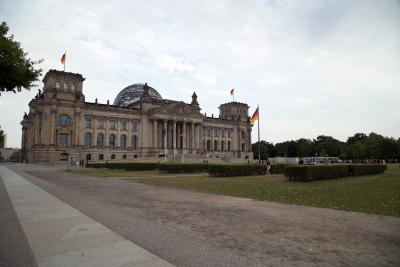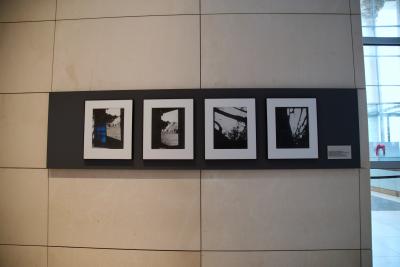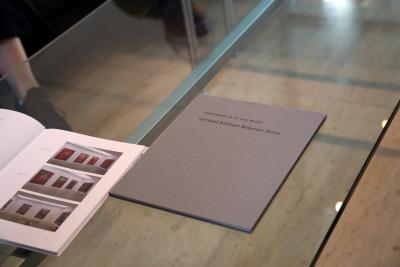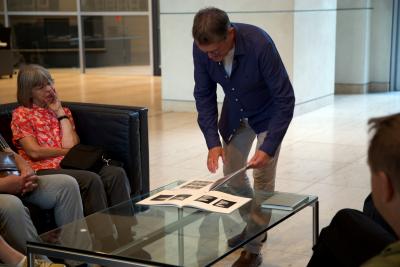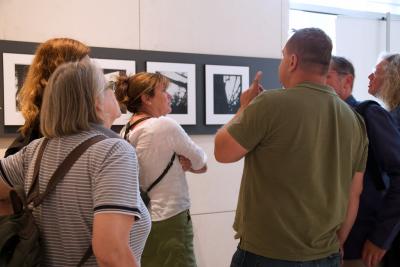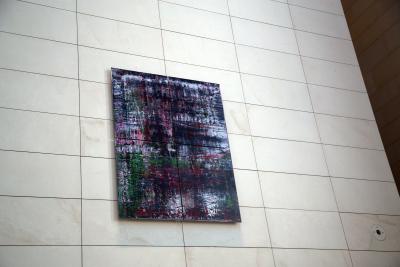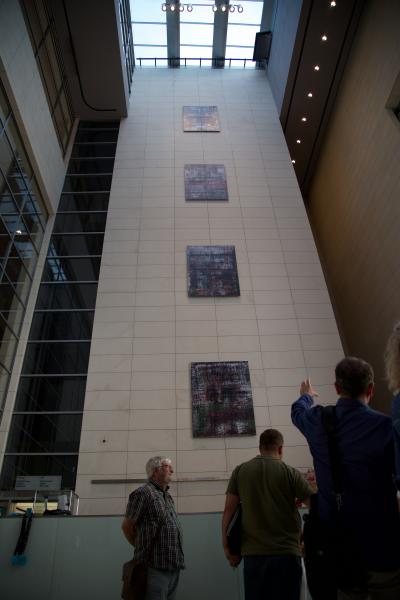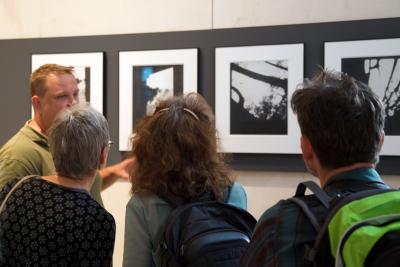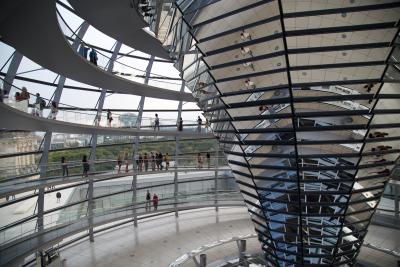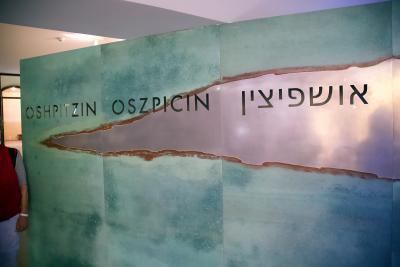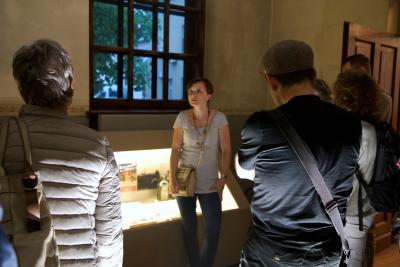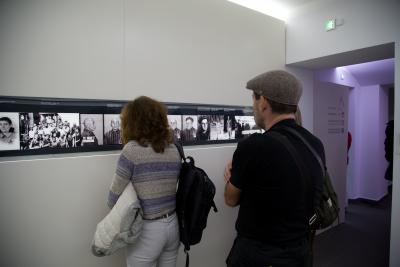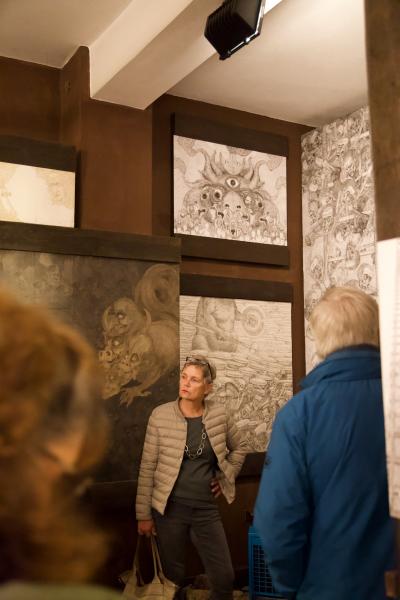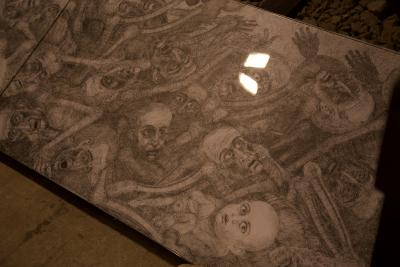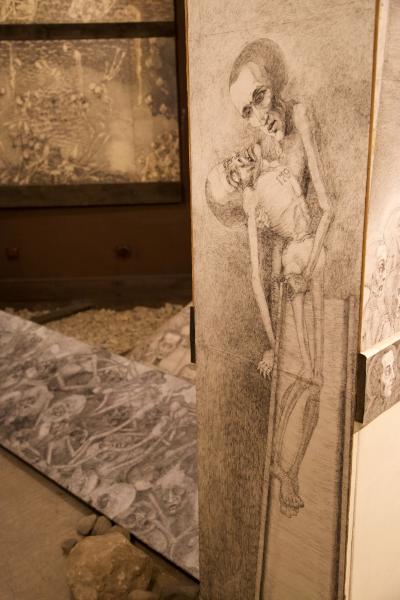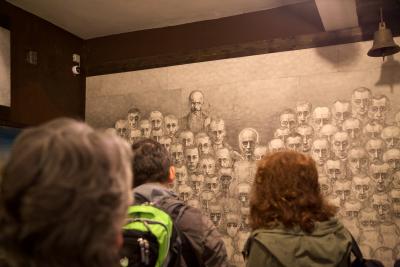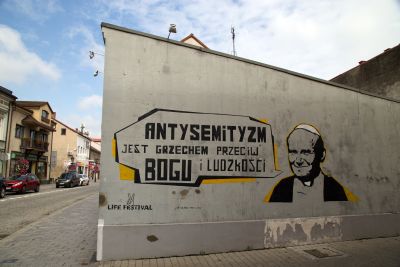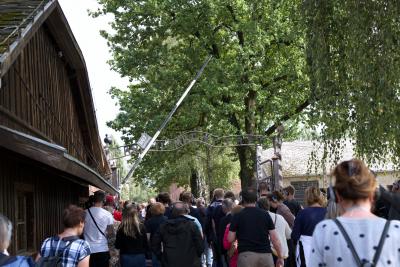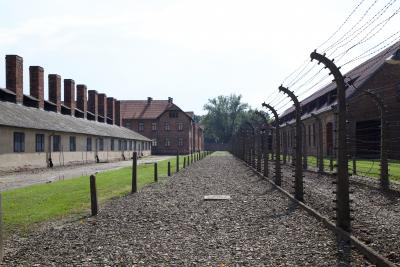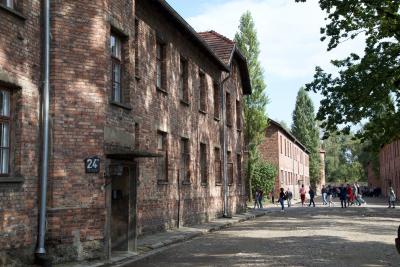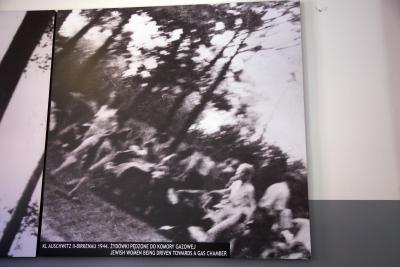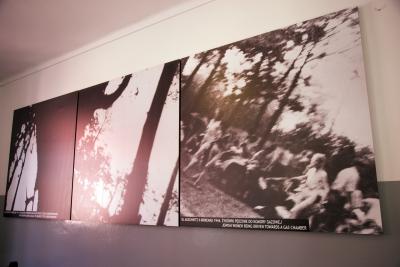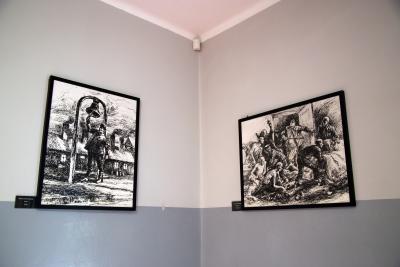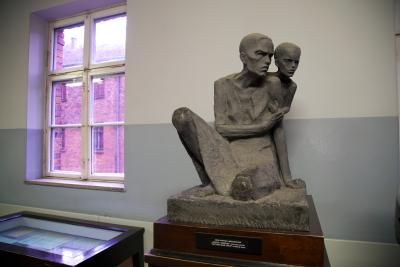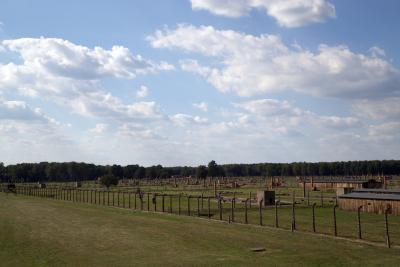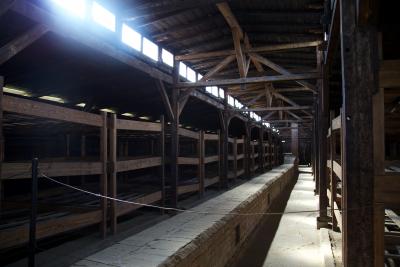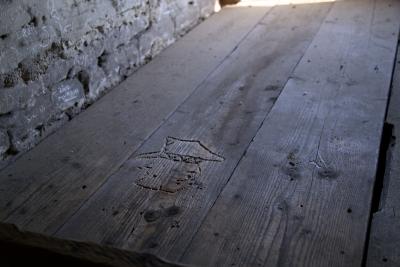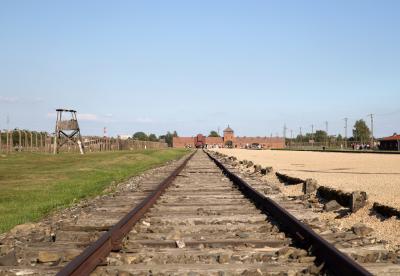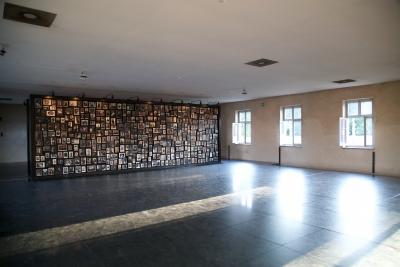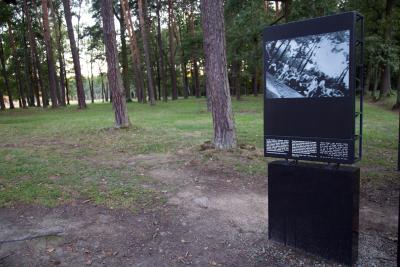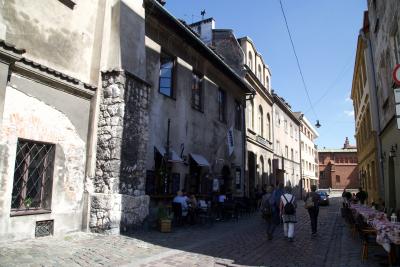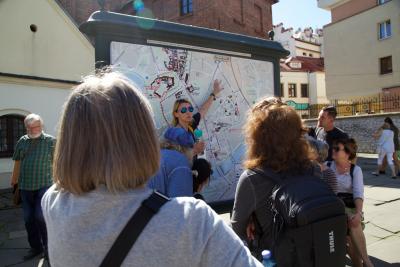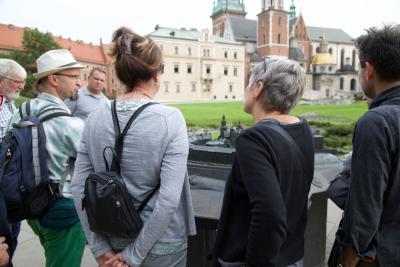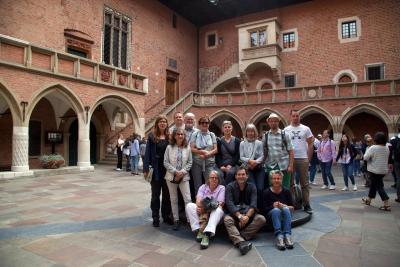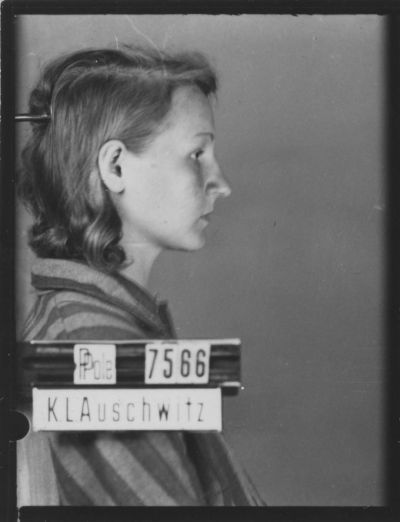On the trail of art after the horrors of Auschwitz. Dispatches from a study trip.

The group then made their way to the site of the Państwowe Muzeum Auschwitz-Birkenau (PMO) (Auschwitz-Birkenau State Museum). During the tour they passed through the exhibition: The exhibition doesn’t just cover the story of the camp’s history, spatially it also covers the whole area of the camp. The red brick buildings of the barracks glowed in the afternoon sun – it is in remarkable contrast to the story that took place here which is displayed for all to see. The rooms were all filled with different groups of visitors. The “highlights”, if you can call them that, included the rooms housing the collections of personal artefacts belonging to the prisoners, which were taken from them when they arrived at the concentration camp. The mountains of suitcases, shoes and combs, some of them labelled with the owner’s name, affect the participants on an emotional level. What left a particularly lasting impression was the shorn hair of the prisoners which is displayed as a seemingly endless pile.
Other aspects include the crematorium and block 11 (the death block). Traces of the prisoners can be found in the photographic portraits, in drawings, and in their belongings.
The tour of Birkenau, three kilometres away, was in stark contrast to the tour of the actual site of the main Auschwitz camp. Against the narrow alleys and the row upon row of brick barracks at Auschwitz, the expanse of Birkenau seemed even more enormous. The few wooden barracks there served only to reinforce the impression of incredible size. But traces of the prisoners can be found here too; in carvings or paintings made by the prisoners in the wooden walls of the barracks. Traces can also be found in the former personal effects stores, which were referred to in the language of the camp as “Canada” and were where the new arrivals had to surrender their worldly goods.[7]
The time in Birkenau was particularly important for the group when it came to Gerhard Richter and his series of paintings: They visited the place where the secret photographs were taken over 70 years ago and were able to gain an impression of the whole area, which lies almost peacefully within the birch trees. Information boards are a reminder of the crimes that were committed here and refer to the photographs that Gerhard Richter used in 2014 as the template for his artistic analysis. The group found that the thematic circle of the study trip closed here, if it hadn’t already.
As well as taking the tour, the members of the study group were also given insights into the art collection at the memorial. This is not part of the permanent exhibition, but can be booked separately.[8] Artworks from four different categories can be found there: legal commissioned pieces in the camp context, semi-legal pictures for private use (mostly by SS men), private and illegal works and works that were produced after the war. The memorial has thousands of objects, some of them too valuable in an idealistic and politically commemorative sense for them to be exhibited. These include works of art by professional artists and by amateurs, but also art that was created in secret and which documents the suffering of the prisoners and serves as an outlet for them. Works commissioned for the SS commanding officers and their men are also preserved. They are preserved and exhibited just like the portraits of Josef Mengele’s[9] victims that had to be drawn.[10] But it begs the question, are these objects then art? This is a question discussed by the guide and members of the group in the face of such questionable objects. But the real question is actually - by what benchmarks do we measure art? By the financial value or the type of technique used by the artist? Perhaps, as the staff member at the memorial suggests, you have to see the art objects, irrespective of what category they come from, as documents of the time?
[7] Cf. Israel Gutman, Michael Berenbaum: Anatomy of the Auschwitz Death Camp, Washington D.C 1994, p. 251f.
[8] Cf. Auschwitz-Birkenau State Museum: Wystawa sztuki w byłej kuchni obozowej, Link: http://auschwitz.org/muzeum/zbiory-historyczne/wystawa-sztuki-w-bylej-kuchni-obozowej/, last accessed on 7/1/2020.
[9] Josef Mengele (1911-1979) was the camp doctor for the so-called gypsy camp and for the women’s camp. He was involved in the selection process and sent thousands to their death. He also carried out pseudomedical experiments on camp prisoners which frequently had fatal consequences. After the end of the Second World War, he managed to flee to South America under a pseudonym. Cf. Franz Menges: Art. Mengele, Josef, in: NDB 17 (1994), p. 69-71.
[10] More information on the types of exhibit can be found at: http://auschwitz.org/muzeum/zbiory-historyczne/sztuka/, last accessed on 7/1/2020.
